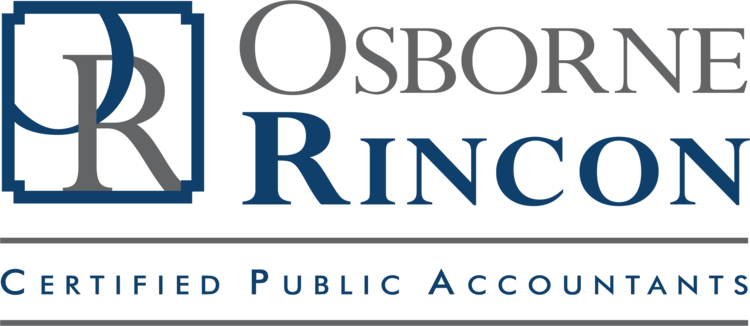By: Bruce Legaweic, Partner, CPA
The Employee Retention Credit (ERC) has received much attention and airtime encouraging employers to claim the credit before time runs out. TV ads include everyone from “Mr. Wonderful” (Shark Tank) to actor Ty Burrell (who plays the character Phil Dunphy on Modern Family) soliciting your business. But do you really qualify? That is the question.
The truth of the matter is, the rules are complex and there are traps awaiting the ill-informed.
A Brief History
The ERC is a fully refundable credit designed for businesses who continued paying employees while a business was “shutdown” (fully or partially) due to COVID-19 or had a significant decline in gross receipts from March 12, 2020, to September 30, 2021, when compared to the same quarter in 2019.
For 2020, the decline in gross receipts must be 50% or greater compared to 2019, and for the first 3 quarters of 2021, the decline must be 20% or greater. The potential refund for 2020 can be as much as $5,000 per employee. This is based on 50% of wages up to $10,000 gross wages per employee.
It gets even better: For 2021, the refund is 70% of wages, once again, up to $10,000 per employee, so the potential refund is $7,000 per quarter for 3 quarters of 2021. To claim the refund, an employer must file and amended payroll return 941X with the IRS. Depending on the number of qualifying employees, the refund can be very significant.
It should be noted that, the IRS issued notice IR-2022-183, October 19, 2022 – warning employers “to beware of third parties promoting improper Employee Retention Credit Claims.” The IRS commissioner is quoted as saying. “The amount of misleading marketing around this credit is staggering adding risk for businesses improperly claiming the credit.”
Breaking it Down
Does this mean a business should not apply for the ERC refund? Absolutely not, however; it does mean that before a business files for the ERC refund it should clearly understand the qualifying requirements to claim the credit and properly document the facts and circumstances that demonstrate eligibility. It should be noted, that certain third-party filers have put language in their agreements stating, “You understand that we (the third party filer) shall NOT be liable for your ineligibility for any ERC Claim refund for any reason without limitation.” Such qualifying language give pause for concern. It is therefore suggested that an employer seek qualified professional advice in determining eligibility.
The qualifying events of “direct” business shutdown due to government order or a decline in gross receipts are generally clear, identifiable and easy to support. During COVID-19, many restaurants were required to operate at less than full capacity as a result of a government order. This is an example of direct “partial shutdown” that would make the employer eligible to file for ERC refund.
A qualifying circumstance that has received much attention is termed “supply chain disruption.” During COVID-19, certain businesses that were not fully or partially shut down by a direct government order, but were effectively shut down (fully or partially) where their suppliers were shut down by the government order. This is a complex area of the CARES Act and careful attention to the rules, facts and circumstances and details is crucial to determine if a business qualifies due to “supply chain disruption.” It is certainly not automatic.
The Latest Information
In June 2023, the IRS issued a GLAM (Generic Legal Advice Memorandum) specifically addressing qualifying circumstances of a “supply chain disruption.”
A brief summary of the 3 conditions that MUST be met is as follows:
1. Supplier was unable to deliver, what are termed “crucial” goods or materials due to the COVID-19 government order.
2. The employer/business was no able to obtain the goods from supplier or an alternative source.
3. AND the business suffered a more than nominal disruption to their business as a result of supply chain disruption.
It is also important to note that if business does file for and receive an ERC refund, it must amend its federal income tax return and reduce the deduction claimed for wages on the tax return year for which the amended payroll return was filed. If a business receives ERC refunds for 2021 quarters, it must amend its 2021 income tax return – effectively paying tax on the amount of refund received.
First and foremost, it is important that employers understand that payment of an ERC refund claim does not mean the IRS agrees that the employer is entitled to the refund. The claim can be audited by the IRS at a later date. Keep in mind with the IRS, the taxpayer is considered “guilty” until innocence (your tax position) is proven correct.
Also of concern is the possibility that the Treasury is considering extending the statute of limitations to audit ERC refund claims to 5 years. The normal time period for the IRS to audit income or payroll returns is 3 years. It is clear the IRS has identified ERC refund claims as an area of improper filing resulting in erroneous refunds being issued.
It is therefore important to work with a tax professional that understands the complex ERC rules and will help to determine if your business meets the requirements to properly file for the refund. If you are seeking a tax advisor or accounting firm to support your business, contact us at (442) 307-5512.
Bruce J. Legawiec, CPA, is a Partner with Osborne Rincon CPAs and has over 30 years of diverse public accounting experience. Osborne Rincon is one of the oldest and most respected full-service accounting firms in the Coachella Valley. To learn more, call (442) 307-5512 or go to www.OsborneRincon.com.
